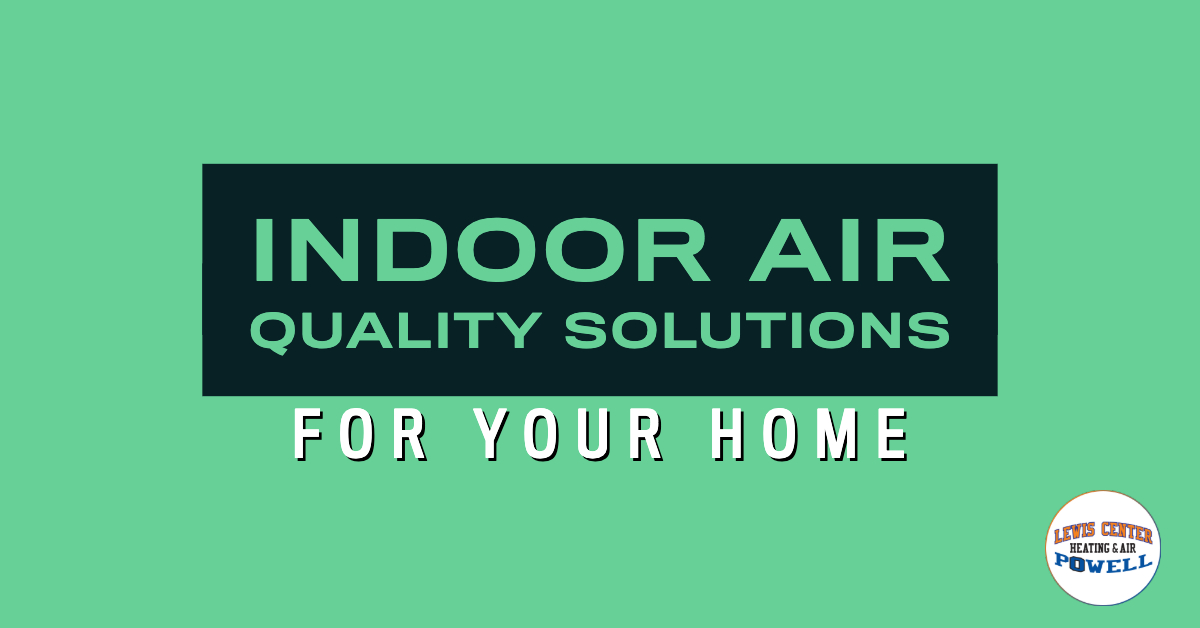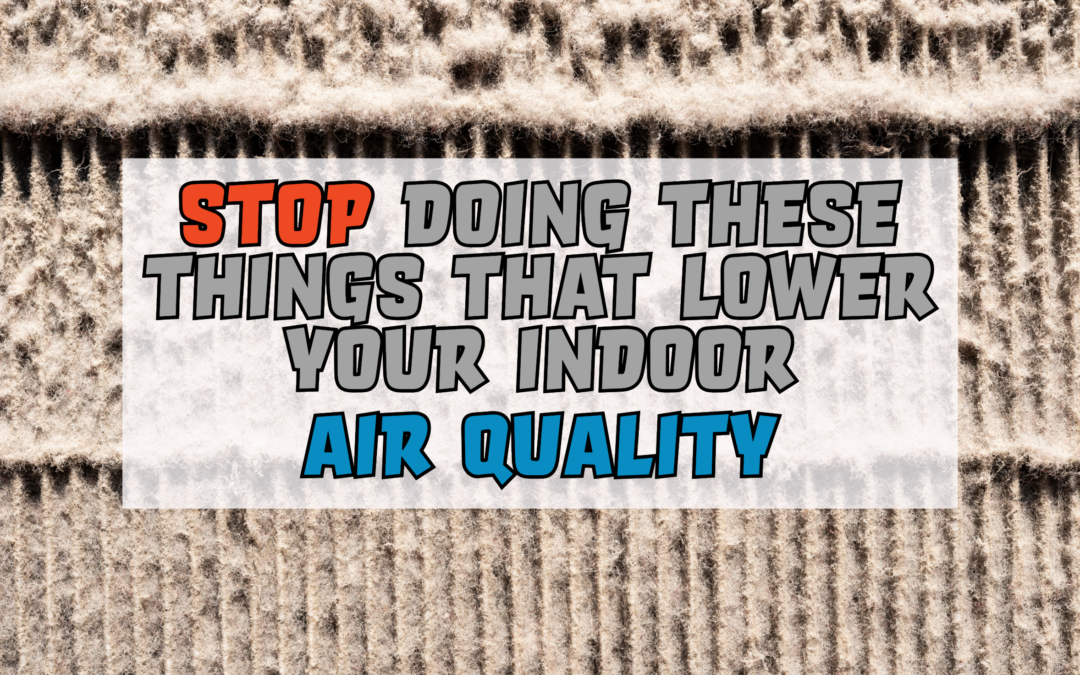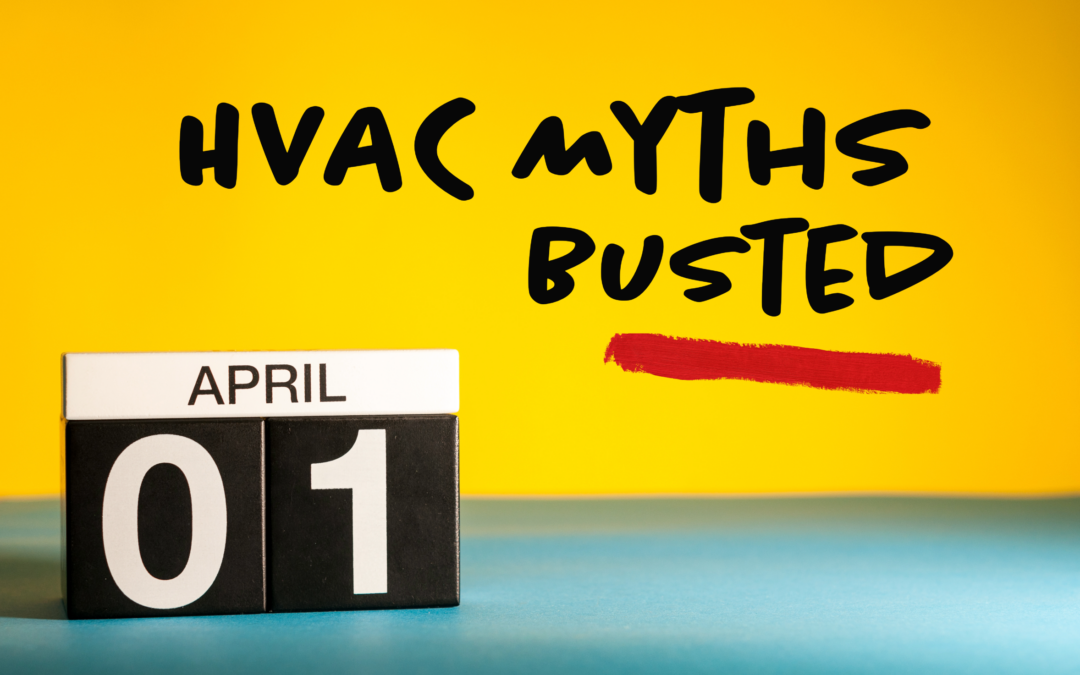Poisonous gases galore. … Emissions from the exhausts of millions of vehicles. … The combustion of fossil fuels worldwide. … These are just a few of the significant causes of outdoor air pollution. But what about indoor air pollution? Have you ever considered how safe the air is inside your home? Experts say the air inside most American homes can be more than five times more polluted than what we breathe outdoors. And while it’s not likely that you can eliminate all the allergens within your home, you can reduce the number and your vulnerability to them, by taking some straightforward measures.
To help with this, and enhance the quality of air within your home, we at Lewis Center-Powell Heating & Air offer some tactics to improve your allergy symptoms.
IT STARTS AND ENDS WITH CLEANLINESS
A clean and orderly house constitutes a healthier home because good indoor cleanliness can significantly cut down on dust, animal dander, and other indoor allergens, experts say. Your sanitation efforts should focus on strategies to reduce the accumulation of pet dander, mold, and dust hiding within your home. Just remember, “cleanliness is next to godliness.”
FLOORING FIRST
At least once or twice weekly, utilize a good vacuum cleaner equipped with a HEPA filter on your rugs and carpets. A HEPA filter (which stands for high-efficiency particulate air, also known as high-efficiency particulate absorbing) is an efficiency standard of an air filter that works by pushing air through a fine mesh. That mesh traps toxic particles such as pollen, pet dander, dust mites, and tobacco smoke. Also, moving forward, going with hard-surface flooring rather than wall-to-wall carpeting should cut down on allergens in your house.
TARGET ITEMS THAT ATTRACT ALLERGENS
Frequently wash bedcovers, drapes, sheets, quilts, blankets, and other things that draw allergens—especially if you have animals in the home. Authorities advocate washing these items in water that is at a minimum of 130° F. In the same line of reasoning, consider using dust mite–proof pillow covers, in addition to mattresses and box springs, whenever possible. Finally, remove clutter. Focus on any clutter traps and holds dust that can lead to a reaction.
PLANTS BELONG OUTSIDE
Plantlife can seem like an excellent idea indoors, but they can also cause the accumulation and encourage the growth of mold. Yes, mold. You should avoid having plants inside, experts advise, if indoor allergens are a problem. While some people say plants assist in improving indoor air quality by releasing oxygen, there’s no denying they are still allergy triggers for many people. To put it another way, they generate more headaches than they help.
REMEMBER TO REPLACE YOUR AIR FILTERS
If your home is equipped with a forced-air heating system, be sure to remember to replace the filters frequently. Electrostatic filters are great. They help assure all that dust and other airborne nuisances floating around in your home get caught rather than being recirculated throughout your home. Also, to clear out the dust that might be trapped inside, think about having your ducts vacuumed. Cleaning your ducts does help in some cases, although it might not always be prudent. To help in determining whether or not you should do so, the Environmental Protection Agency advises homeowners at https://www.health.harvard.edu/iaq.
PURIFY YOUR AIR
If you have sensitivities to indoor air pollution and can’t control the source of the predicament — say, for instance, you can’t bring yourself to get rid of the beloved household pet — it should benefit you to utilize an indoor air purifier. Iconic purifiers are great. Locate them in the most frequently used common areas of the house. These devices can help you get rid of some of the nuisances that might be causing your symptoms. You probably won’t be able to eradicate these allergens, but you can cut them down, which should help the issue.
THINK ABOUT DEHUMIDIFIERS
Dehumidifiers are another viable option. Think about putting dehumidifiers in moist areas. Take the basement for instance. A dehumidifier can help stop the growth of mold in your basement. In addition to that, guarantee that another possible source of mold, bathrooms, are ventilated. Wash off any noticeable mold that develops in the shower, on walls, or fixtures there.
CRACK OPEN A WINDOW
It might sound crazy. However, even in the colder months, it can be ok to crack open windows briefly to enable some fresh air to flow into your home. In addition to windows, eliminate possible air contaminants by utilizing fans in the kitchen to remove cooking fumes.
NO SHOES IN THE HOUSE!
No one knows what’s on the bottom of your shoes. And no one wants to know, let alone breathe it in. Make sure anyone and everyone coming inside take their shoes off. It might not be a bad idea to put a shoe rack at the front door to remind everyone. If not a shoe rack, a boot tray will help gather dirt, pesticides, and additional pollutants. You don’t want this stuff sneaking its way into your home.
HOW WAS YOUR FURNITURE MADE?
A lot of furniture is manufactured with toxic adhesives that can carry dangerous chemicals. Check your furniture to see if this is the case. On top of that, finishing products like lacquers and varnishes could cause trouble for some people with allergies and asthma. Educate yourself about your furniture and avoid purchasing new furniture produced with woods that have been treated with the chemical formaldehyde and constructed with toxic glues.
For more info, or to schedule a tune-up, call Lewis Center-Powell Heating & Air today at 614-490-7530 or schedule an appointment online now at www.lewiscenterpowellheatingandair.com/schedule-now/.







